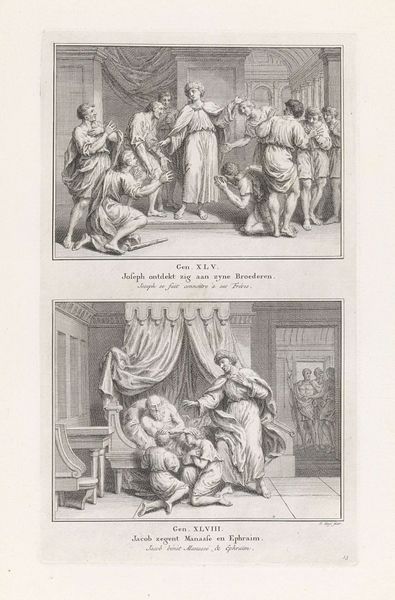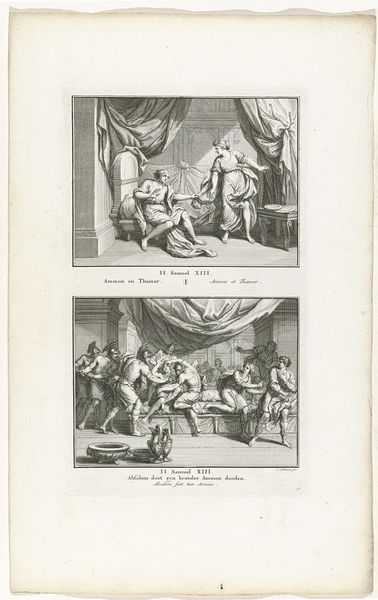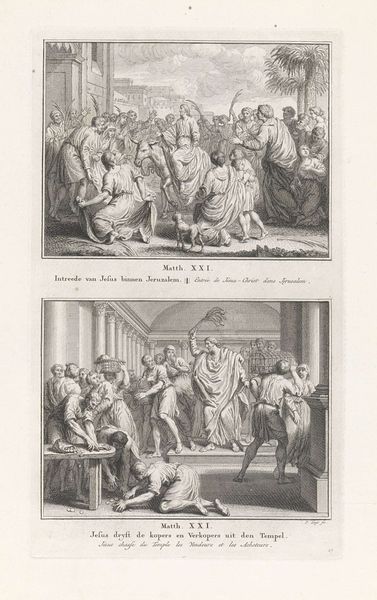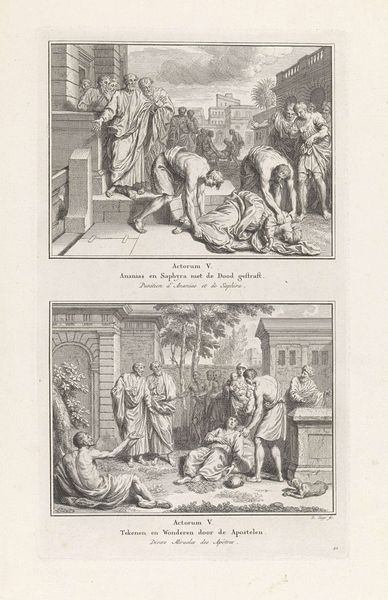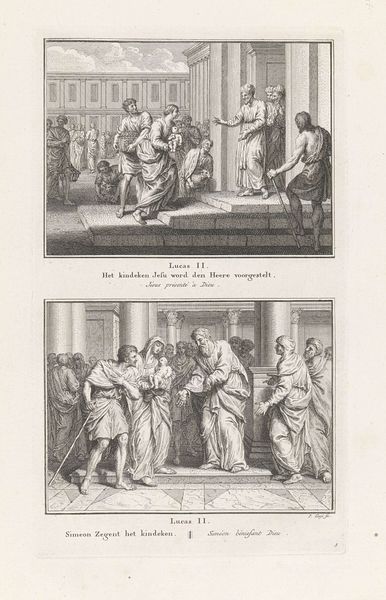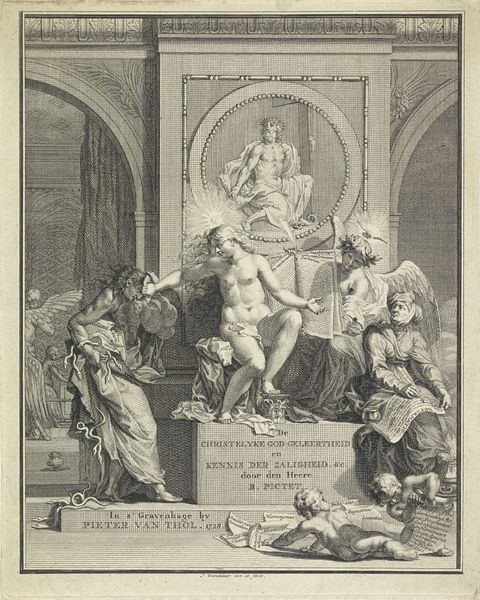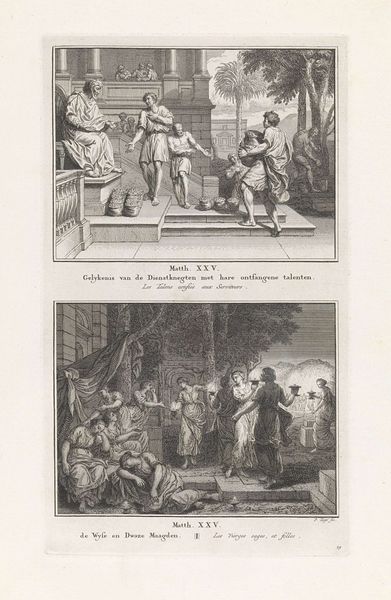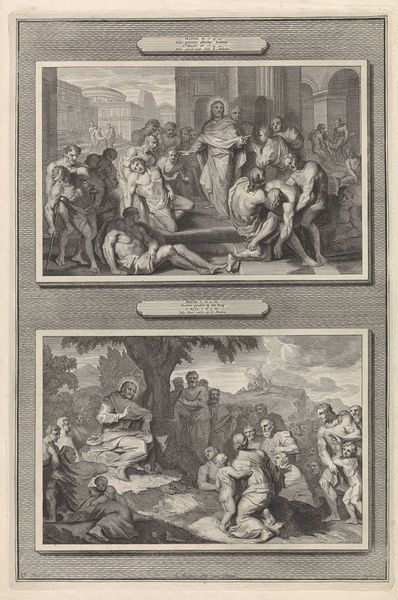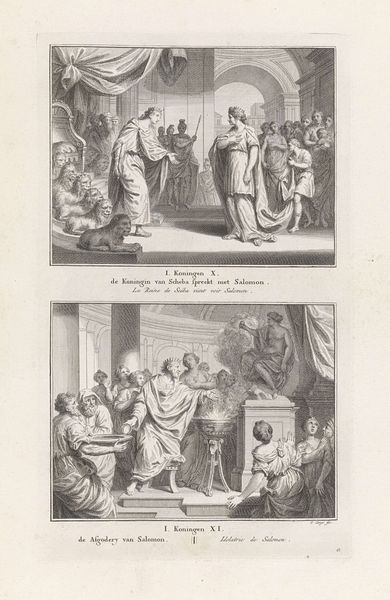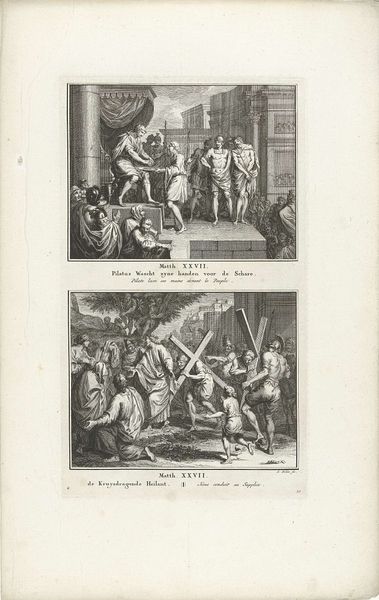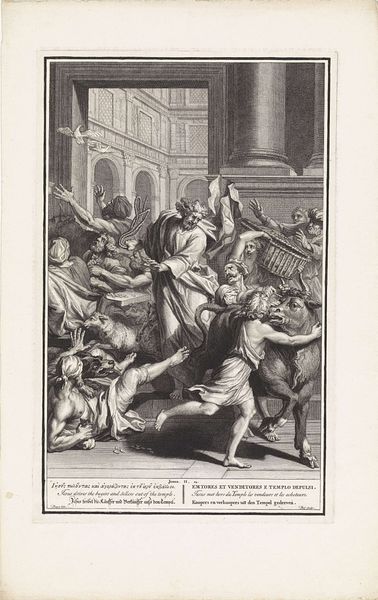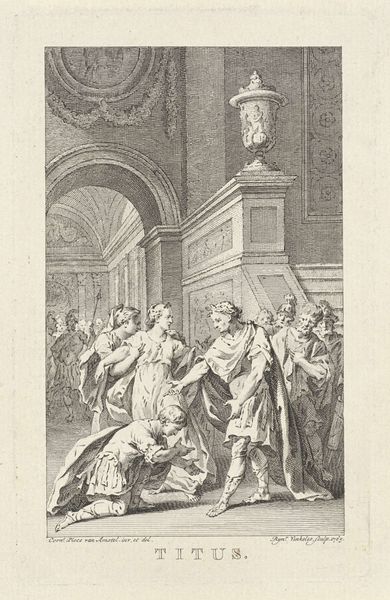
print, engraving
#
narrative-art
#
baroque
# print
#
figuration
#
genre-painting
#
history-painting
#
engraving
Dimensions: height 365 mm, width 240 mm
Copyright: Rijks Museum: Open Domain
Curator: Looking at this engraving, “Geseling en Bespotting” from around 1700 by Joseph Mulder, the sharp lines and contrasts feel immediately dramatic. Editor: Dramatic is one word. My first impression is brutality rendered with a kind of cold, precise efficiency. The black and white amplifies the starkness. Makes me think about how readily violence can be manufactured and distributed...literally. Curator: Precisely! This print, like many of the period, wasn't created in a vacuum. It speaks to the broader system of printmaking and its role in disseminating religious narratives to a wide audience. Engravings allowed for mass production, turning potent religious imagery into a commodity. Think about the accessibility that brought. Editor: A commodity alright. But there's something chilling about packaging this specific scene, these images of torment, for easy consumption. I wonder who the target audience was? Piety driven by guilt? Or just a fascination with suffering, sanitized by art? Curator: Good point! While pinpointing the exact motivations of consumers is difficult centuries later, consider that prints were circulated among different classes and devotion obviously was key. Moreover, artists at the time operated within networks of workshops and patronage and often reproduced images. Here, Mulder is engaging with a pre-existing iconography, recasting it through his particular technical skill. Editor: And what skillful work! Those lines create such intense detail, almost clinical in their clarity. You see the whip cutting into the flesh. The sneers on the faces of the tormentors. Each mark carefully placed to maximize emotional impact. A product meticulously crafted, despite its troubling subject matter. Is the method somewhat divorced from the message, or reinforcing it, perhaps? Curator: It reinforces the message, but also reveals some of the mechanics behind it. By foregrounding the technical processes involved in production—engraving requires considerable labor—we realize how this image moved from artist's hand to printing press to market. It reveals the means by which beliefs were not just visualized but manufactured, and bought, shaping public opinion. Editor: It's quite an eerie realization, to think about faith itself being, in a sense, manufactured, piece by piece. Curator: Indeed. It prompts us to think critically about the power of images, both then and now, in constructing our realities and beliefs. Editor: So much encoded in a seemingly simple print. Thanks for untangling some of it with me.
Comments
No comments
Be the first to comment and join the conversation on the ultimate creative platform.

